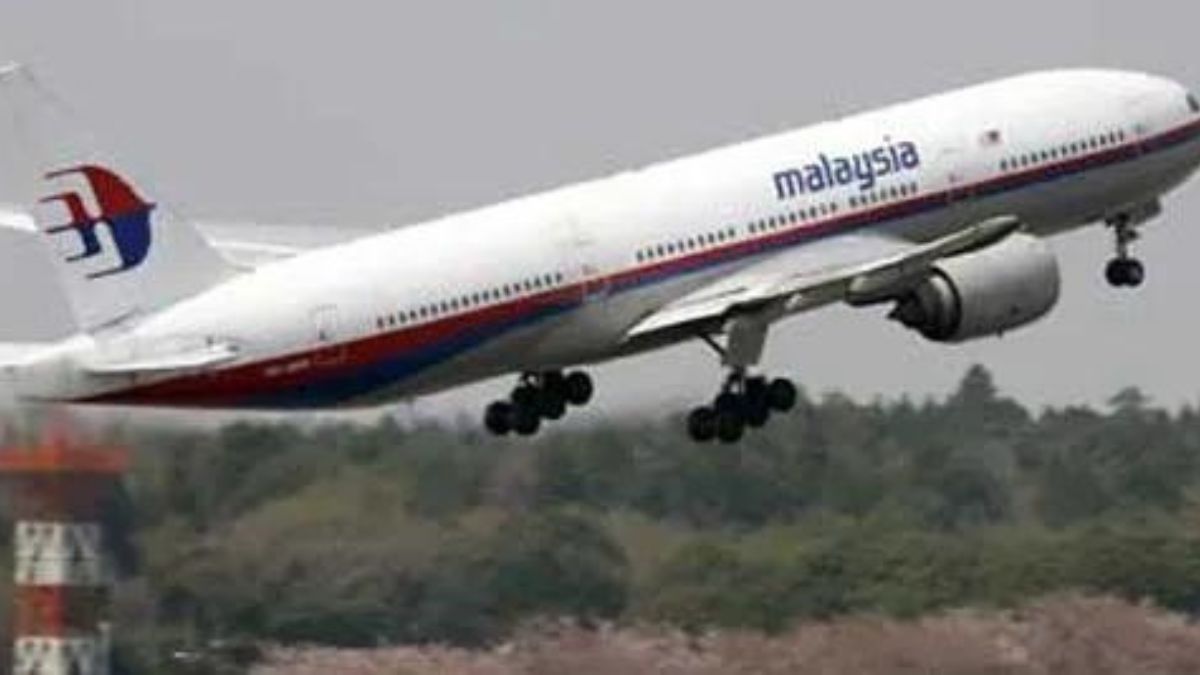The disappearance of the Malaysian Airlines flight, MH370, in 2014 sparked the biggest search in aviation history.
However, the whereabouts of the jet, which had 239 people on board, continue to be a mystery.
Years after its disappearance, an Australian scientist claims to have found the “perfect hiding place” for the missing plane.
Here’s all we know about the fresh theory.
Where is MH370?
The University of Tasmania’s adjunct researcher, Vincent Lyne, said in a post on LinkedIn that MH370 is believed to be located where the longitude of Penang airport intersects with a flight path from the pilot-in-command’s home simulator.
In a post titled Mystery of MH370 Solved by Science, he wrote that the track was previously dismissed as “irrelevant” by the FBI and other officials.
This site is situated in a deep 6,000-metre trench at the eastern end of the Broken Ridge in the Southern Indian Ocean, an area characterised by its “rugged and dangerous ocean environment renowned for its wild fisheries and new deep-water species,” he said.
Lyne said the deep hole in the Indian Ocean with underwater plateaus, volcanoes and deep ravines could be the perfect hiding spot for the missing flight.
In his post, he added, “That location needs to be verified as a high priority. Whether it will be searched or not is up to officials and search companies, but as far as science is concerned, we know why the previous searches failed and likewise science unmistakably points to where MH370 lies. In short, the MH370 mystery has been comprehensively solved in science!”
Impact Shorts
More ShortsWhat’s the new theory?
Knowing the area, Lyne contended that Zaharie Ahmad Shah, the pilot of the tragic aircraft, deliberately plunged the plane into that location.
He said that the plane’s damage to its wings, flaps, and flaperon suggested that it was involved in a “controlled ditching.”
The researcher said, “This work changes the narrative of MH-370’s disappearance from one of no-blame fuel starvation at the 7th arc, high-speed dive, to a mastermind pilot executing an incredible perfect disappearance in the Southern Indian Ocean.”
“This justifies beyond doubt the original claim, based on brilliant, skilled, and very careful debris-damage analyses, by decorated ex-Chief Canadian Air-crash Investigator Larry Vance, that MH370 had fuel and running engines when it underwent a masterful ‘controlled ditching’ and not a high-speed fuel-starved crash,” he said.
What do experts believe?
Cardiff University researchers also noted that the aircraft was in the southern Indian Ocean when it made its final leg of the journey, and they think they detected a signal from an underwater microphone, or hydrophone.
Dr Usama Kadri, a reader at the university, was quoted by The Independent, “Our analysis shows clear pressure signals from previous aircraft crashes were detected on hydrophones, even at distances exceeding 3,000 kilometres.
“In the case of MH370, official investigations concluded the aircraft must have crashed near the 7th arc – the point at which the last communication between the plane and INMARSAT (the satellite telecommunications company) occurred.”
MH370’s disappearance
On March 8, 2014, a Malaysia Airlines aircraft carrying 239 passengers, the majority of whom were from China, disappeared while travelling from Kuala Lumpur to Beijing.
The aircraft made an unexpected U-turn from its intended course.
The largest-ever search in aviation history, spearheaded by Australia, was suspended in January 2017 after no sign of the plane was discovered in the 120,000 square kilometres (46,000 square miles) of the Indian Ocean.
The jet most certainly crashed somewhere off the coast of Western Australia in the southern Indian Ocean, according to an analysis of satellite data. Two extensive searches, though, produced no notable outcomes.
Thirty-three pieces of what appear to be aircraft debris have been discovered in six countries since 2014, including Madagascar and South Africa. However, only three wing parts from MH370 were identified.
The United States robotics company Ocean Infinity conducted a comprehensive search for Malaysia Airlines Flight MH370 in 2018 throughout an area of nearly 50,000 square miles using autonomous underwater vehicles. However, the search yielded no results.
Though authorities were unable to identify the culprit, a 495-page report stated that the Boeing 777’s controls were likely intentionally altered to cause it to go off course.
The report also pointed out errors made by the air traffic control centres in Ho Chi Minh City and Kuala Lumpur and provided suggestions to prevent the recurrence of the incident.
Before his aircraft disappeared under eerily similar circumstances, Shah, the flight’s pilot, is reported to have trial flown routes out into the isolated southern Indian Ocean using an advanced home-made flight simulator.
A part of a Malaysian police probe into the pilot’s last days, New York magazine accessed the confidential paper. The publication said that there is compelling evidence to support the theory that MH370’s disappearance was the result of a planned mass murder-suicide rather than an accident.
With inputs from agencies


)

)
)
)
)
)
)
)
)



